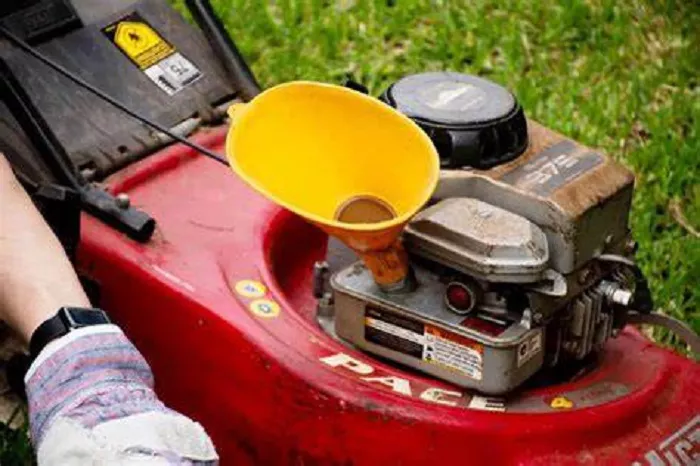Maintaining a petrol lawn mower is essential for ensuring its longevity and performance. One of the most critical aspects of maintenance is choosing the right oil. Using the correct oil reduces engine wear, improves efficiency, and prevents costly repairs. However, with various oil types available, selecting the best one can be confusing.
Why Oil Selection Matters for Petrol Lawn Mowers
- Reduces friction between moving parts
- Cools the engine by dispersing heat
- Prevents rust and corrosion
- Cleans internal components by suspending debris
Using the wrong oil can cause poor performance, increased fuel consumption, and even permanent engine damage.
Types of Oil for Petrol Lawn Mowers
Conventional Oil: Derived from crude oil, it is affordable but requires more frequent changes.
Synthetic Oil: Chemically engineered for better performance, it lasts longer and handles extreme temperatures well.
Semi-Synthetic Oil: A blend of conventional and synthetic oils, offering a balance between cost and performance.
Most modern lawn mowers work well with SAE 30, 10W-30, or 5W-30 oils. However, the best choice depends on climate and engine specifications.
Understanding Oil Viscosity
Single-Grade Oils (e.g., SAE 30): Best for consistent warm climates (above 10°C / 50°F).
Multi-Grade Oils (e.g., 10W-30): Work in varying temperatures, providing better cold starts.
Choosing the Right Viscosity Based on Climate
| Climate Condition | Recommended Oil Grade |
|---|---|
| Hot weather (consistently above 10°C / 50°F) | SAE 30 |
| Moderate climates (fluctuating temperatures) | 10W-30 |
| Cold weather (below freezing) | 5W-30 |
Synthetic vs. Conventional Oil: Which is Better?
Conventional Oil
Pros: Cheaper, widely available, suitable for older mowers.
Cons: Breaks down faster, requires more frequent changes.
Synthetic Oil
Pros: Longer lifespan, better high-temperature stability, improved engine protection.
Cons: More expensive, may not be necessary for basic mowers.
Manufacturer Recommendations
| Brand | Recommended Oil Type |
|---|---|
| Honda | SAE 10W-30 (or manufacturer-approved equivalents) |
| Briggs & Stratton | SAE 30 (for warm climates), 10W-30 (for variable temps) |
| Stihl | High-quality 4-stroke engine oil (SAE 30 or 10W-30) |
Using the wrong oil may void the warranty, so always follow the manual.
Common Oil-Related Problems & Solutions
Overfilled Oil
Symptoms: Smoking, hard starting, oil leaks.
Solution: Drain excess oil to the correct level.
Low Oil
Symptoms: Engine knocking, overheating.
Solution: Top up immediately to prevent engine damage.
Wrong Oil Type
Symptoms: Poor performance, excessive smoke.
Solution: Drain and replace with the correct oil grade.
Environmental Considerations & Safe Disposal
- Take it to a recycling center or auto shop that accepts used oil.
- Store it in a sealed container until disposal.
Final Recommendations
For most users: 10W-30 is the best all-around choice.
Hot climates: SAE 30 works well.
Cold climates: 5W-30 ensures easy starts.
High-performance mowers: Synthetic oil offers superior protection.
Always follow the manufacturer’s guidelines and change oil regularly for optimal performance.
Conclusion
Choosing the right oil for your petrol lawn mower is crucial for engine health and efficiency. By understanding viscosity grades, oil types, and maintenance practices, you can extend your mower’s lifespan and avoid costly repairs. Always refer to the owner’s manual, use high-quality oil, and perform regular oil changes for the best results.
With this guide, you now have the knowledge to make an informed decision—ensuring your lawn mower runs smoothly for years to come.

